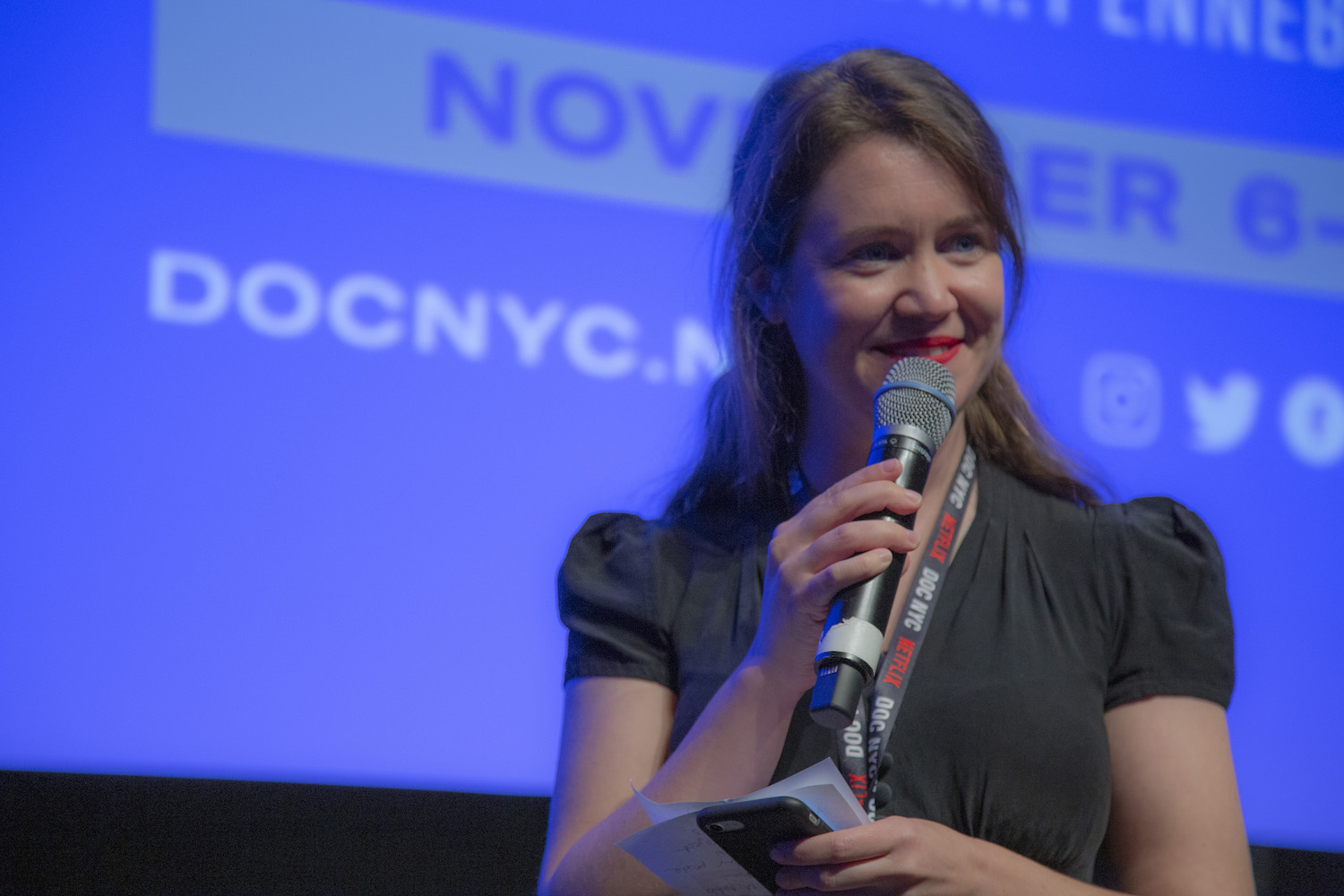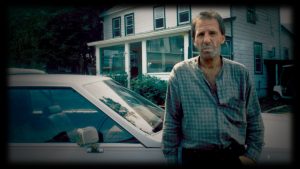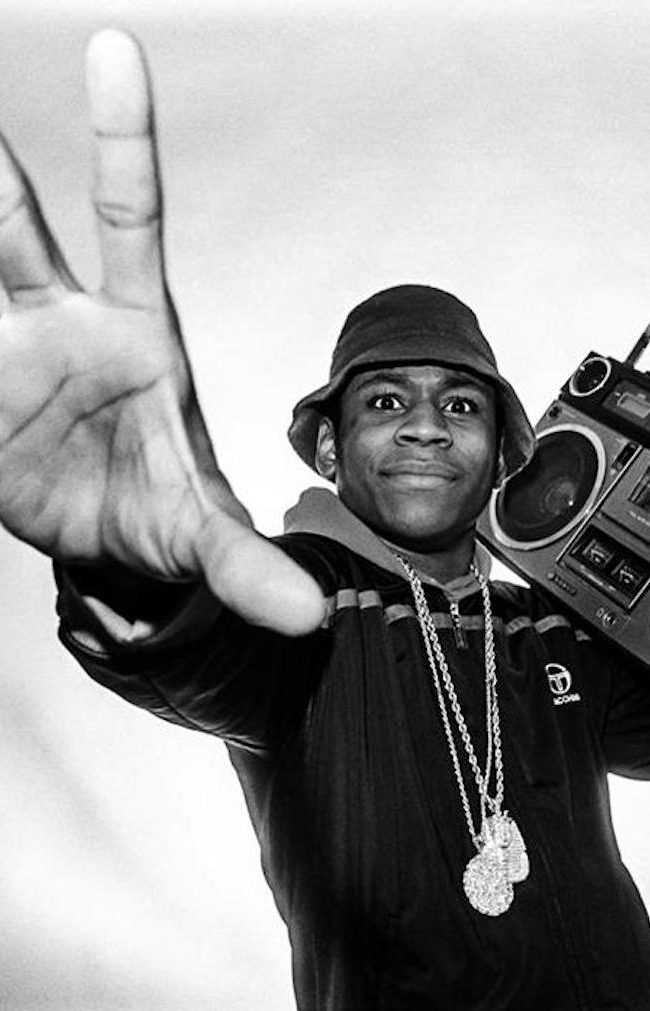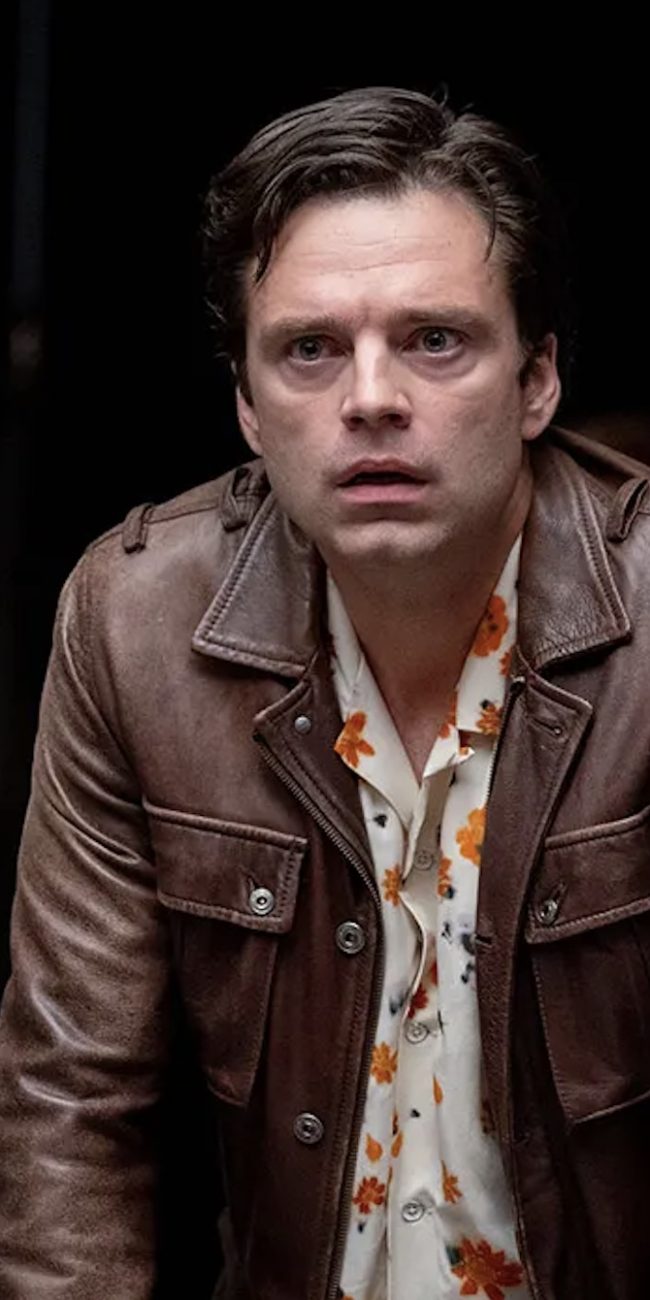A Conversation with Martha Shane (NARROWSBURG)

I spoke with director Martha Shane (Picture Character) by phone a few weeks after DOC NYC to discuss her latest documentary, Narrowsburg (which I also reviewed). This was my second conversation with her in the past year (I previously interviewed her at the Tribeca Film Festival), and she had, as before, tons of interesting things to say about her work. Narrowsburg tells the fascinating story of how two big-city grifters arrived in the small town of Narrowsburg, NY, in 1998, and upended the community by first starting a film festival and then planning a film shoot. Richard Castellano and Marie Jocelyne Plante were their names, and this is their story, as told by the those who lived through the debacle. What follows is a condensed digest of our conversation, edited for length and clarity.
Hammer to Nail: This film has been long in gestating, has it not? Could you tell the story of how you started working on it?
Martha Shane: So, trying not to give too much away, the whole thing started when my co-producer on the film, Dan Nuxoll, who runs a company called Rooftop Films, had rented some equipment to a woman who was running the Queens International Film Festival, and he never got paid. She wasn’t responding to emails, her phone went dead, and so we started reaching out to a few people just to say, “Do you know where we can find this person?” And we kept running into people who said, “You know, I don’t know where to find her. She seems to have disappeared, but she owes me a lot of money. And if you find her, please let me know.”
And so, it turned out there was this person running the Queens Film Festival at the time who seemed to be scamming a lot of people. Initially, the film started out about this woman, Marie, and the Queens Film Festival and sort of this question of why would anyone run a scammy film festival? I think a lot of the film-festival programmers and people I’ve talked to have been, like, “What a weird thing to do.”
But, yeah, that was how it all began. And through that process of research around this woman, we found out that she had been involved with a guy named Richard Castellano and that they had run a small film festival and shot a gangster movie in upstate New York in a tiny town called Narrowsburg. And as I started to spend more time in Narrowsburg and talk to people there, it just felt like a gathering of all the themes that I was really interested in exploring around the power of cinema, the allure and romance of filmmaking and Hollywood, and this question of how do we know when we are giving people a dream to believe in versus committing fraud, essentially. And over time, the film just became more and more focused on what happened in Narrowsburg.
HtN: When did you first start making the film, then?
MS: So, the earliest footage, believe it or not, was shot in 2009, and at that point we did not have access to Marie Jocelyne or to her husband, Richard Castellano, who’s the other main subject of the film. And so we were sort of doing these interviews and hearing people’s stories, but not sure that it could really happen unless we could get access to those two main people.
And around 2012, I believe, we got access to Marie. And then in 2015, we were able to film with Richie as well. And that’s when it really felt like we had the footage that we needed to tell the story the way it needed to be told. And then there were a few years of editing; it was a crazy process. I thought a lot about how my documentary tells a story of this gangster movie that they were shooting in Narrowsburg. And I kept thinking about how cursed that project was. And then I kept thinking, maybe the curse has been passed down to my film, and that’s why it’s so difficult. And maybe someone’s going to come along and make a movie about me trying to make a movie about this. (laughs) But yeah, I felt like once we screened my documentary in Narrowsburg for those people there, it felt like the curse had finally been lifted.
HtN: You shoot your interviews in this really interesting way, with a varied use of rear projection of the speakers’ own images where you have, I think, at least two other projections of the person you’re photographing. You’ve got a primary camera that we’re seeing of your talking-head interview subject, but then behind them or to the left or the right, we have additional images, which you are projecting live as they talk and sometimes there’s a slight lag because of how the feed works. How did you come up with this technique and why use that for these interviews?
MS: Yes, so the technique of using these live projections came about through a process of experimentation. As I mentioned, my co-producer runs a film festival, so he had a lot of projectors and we sort of started playing around with what might be possible. And my feeling with interviews is that most films take a fairly conservative approach to how they’re shot. And we wanted to try something different.
With every interview setup, there are many visual choices that inform how the audience interprets things. The amount of light, if it’s a low angle or high angle, the location, everything about it is determined. So, I feel like by using these live projections that are so stylized, it sort of draws attention to the manipulation that we’re doing and it’s not trying to make the hand of the filmmaker invisible. It’s extremely visible. And I also think that, for this particular film, it made sense to have projections because a lot of the story is about people’s desire to be in the movies, to sort of see themselves on the big screen. And so what better way to incorporate that into the visual design of the film than to have them actually projected within the interview setup?
HtN: Yes, it’s very effective and it’s interesting to hear your rationale. Speaking of the interviews, since you started 10 years ago, I’m curious about the challenges of keeping up with technology. You had no way of predicting in 2009 which way technology was going to go, so how did you navigate that over the years?

A still from NARROWSBURG
MS: So that’s a really good question and our post-production people would probably appreciate you asking it because we shot this film with practically every camera. In a way, it’s like a history of not just the past 10 years that I’ve been making it, but probably going back to 1998-99 when the Castellanos went up to Narrowsburg, because we have so much archival footage in the film. We have every camera from Digital Super 8 to MiniDV, 35mm in terms of the film that they were shooting up there. And then the Sony EX1 HD camera – an early HD camera – that we started using in 2009, then the Sony FS7, and the Canon C300 that we started using further down the road.
So yeah, I think it was really a challenge to try to make everything look as if it came from the same world or came from the specific world that we wanted it to be from. And I don’t know, I kind of love seeing the progression through the past 20 years in terms of cameras and how technology has changed. And I love those different textures that each camera’s footage has.
HtN: And the different aspect ratios too.
MS: Exactly.
HtN: So, Zac Stuart-Pontier, that former student of Richie Castellano’s, who’s also an actor in the movie within the movie, Four Deadly Reasons, and now himself a filmmaker, seems to have some conflicted feelings about the past. There’s stuff that he clearly feels nostalgic about and stuff that he feels bitter about. Did you find that to be the case with most of the people in Narrowsburg? I mean, it was exciting while it lasted, right?
MS: Yes. I think most of the people in Narrowsburg acknowledged that there was a period of real excitement when the Castellanos first came to town. And one of my favorite things about interviewing them was to sort of really bring them back to that moment, to try to, as much as possible, help them forget everything that they know now, all the aftermath and really capture that time when it seemed like Narrowsburg was on the verge of becoming the next Hollywood or something like that. It was a really exciting time. And I remember talking to Dr. Paul Salzberg, a local doctor who ended up being conned by the two of them. And when I asked, “Can you do some impressions of Richie? What would he say to people?” And he got so caught up in it and had so much joy in remembering what it was like to meet Richie for the first time.
And in those early days it was just really fun. I always feel like it’s important that even if something goes terribly, terribly wrong, that sometimes there was still an experience of joy or belonging or something that you can take that you can preserve and that just because something goes wrong doesn’t mean that it wasn’t real. So yeah, I think a lot of people did have complicated feelings. Zac was a kid and so for him it was his introduction to the movies, which as you mentioned, has become his life. And I think he values that. I think some of the people who lost a lot of money or who had loved ones who lost a lot of money and didn’t necessarily take something like that away from it are angrier. And I think there’s so much shame associated with being conned or tricked in any way, that I just felt lucky that they were willing to talk to me and explain how they were feeling, whether that was rage or gratitude, whatever that might be.
HtN: Sure. And speaking of interview subjects, Brian Vincent, that actor who attended year two of the long-since defunct Narrowsburg Film Festival was a great find. How did you, in fact, find him?
MS: You know, I think it was Zac who had mentioned to me that I should talk to him or to another actor who had been at the film festival. And so I started researching, trying to figure out how to get ahold of him. And when I did, I was completely blown away. In our first phone call, he was just so funny and so charismatic. I was incredibly excited to have found him and it was just amazing that he had kept this notebook and had written down exact lines that people had said over the course of that weekend. And so he was really able to remember it better than a lot of people. I remember some of the funniest lines he had written down, such as Richie saying, “We can’t have any bums in this town. We’ve got a film festival to run here,” after punching someone. (laughs) Meeting Brian was just a complete stroke of good luck. I think that’s what makes it fun to make documentaries, meeting people like that who are just incredibly great natural storytellers.

Filmmaker Martha Shane (photo credit Chris Reed)
HtN: And he really is very engaging. So, your film ends on a pointed note about the questionable fees that some smaller film festivals charge filmmakers to screen their work. Most often the filmmaker/film festival relationship can be a win-win for both parties, but apparently not always. Have you had any bad festival experiences, yourself?
MS: You know, it’s interesting. I have primarily been very lucky, and I can’t say that I’ve had a terrible or disastrous film-festival experience, myself. I almost feel like, in some ways, it would be so much fun to screen Narrowsburg at all kinds of borderline film festivals. But I’m not sure I can afford it because I think I’d have to pay a lot of submission fees. (laughs)
But yeah, to me the whole discussion around film festivals and what’s a scam is really interesting. What does a film festival owe a filmmaker; when is a filmmaker being exploited? I do know people who have really made careers based around making one film and screening it at a kind of scammy or borderline film festival where you’re paying for a lot of it yourself. And then you get the photos and you can post that on Facebook or other social media. And someone sees that, and they say “Hey, you know, I want to make a film. Maybe I should get that guy to direct it or that person.” So who am I, really, to say that that’s not valuable or that’s not real?
So much of film festivals and filmmaking and the film marketplace is about perception and so, yeah, I think it’s a really interesting and important conversation to have in our industry. And there was a Hollywood Reporter article just recently that talked about this question of film festivals exploiting filmmakers, charging for awards and stuff like that. So hopefully that’s just the beginning and people will keep talking about it.
HtN: Martha, thank you so much. I really enjoyed the film and wish you all good things with it. May it far surpass the dreams of the people who tried to make Four Deadly Reasons in Narrowsburg.
MS: Thank you so much. I really appreciate you covering it.
– Christopher Llewellyn Reed (@ChrisReedFilm)
Like what you see here on Hammer to Nail? Why not pay just $1.00 per month via Patreon to help keep us going?











